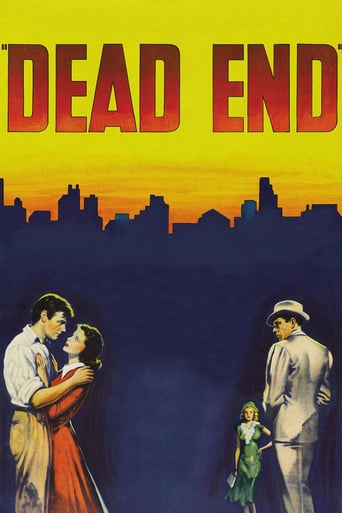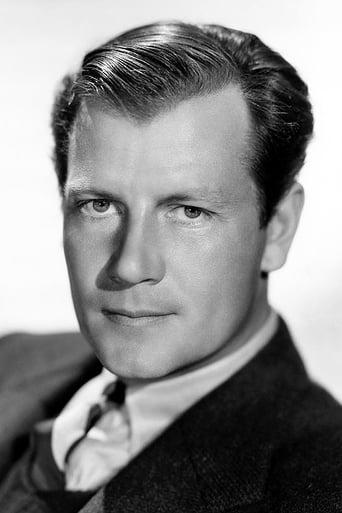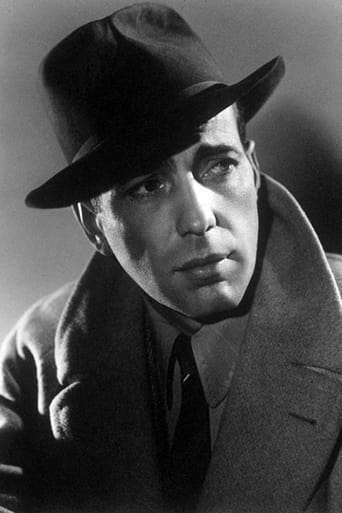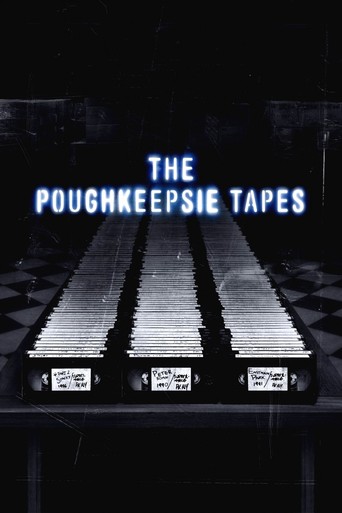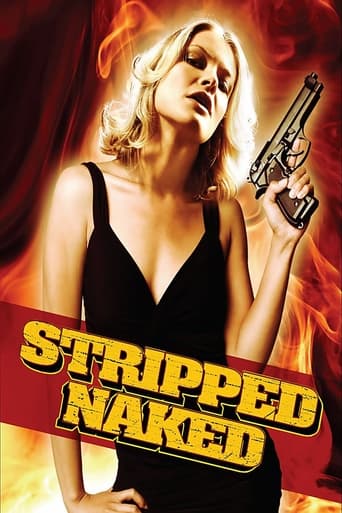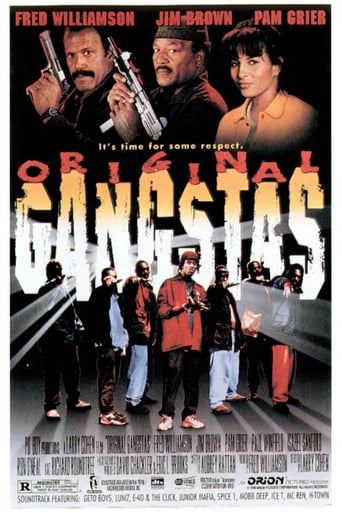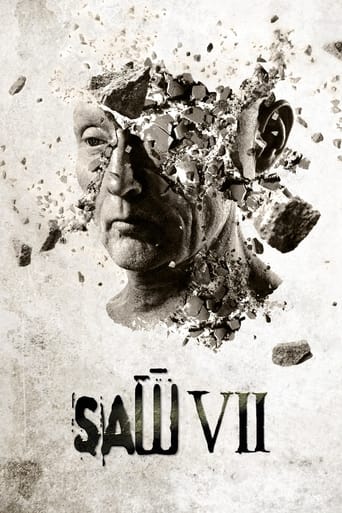Dead End (1937)
Mobster "Baby Face" Martin returns home to visit the New York neighborhood where he grew up, dropping in on his mother, who rejects him because of his gangster lifestyle, and his old girlfriend, Francey, now a syphilitic prostitute. Martin also crosses paths with Dave, a childhood friend struggling to make it as an architect, and the Dead End Kids, a gang of young boys roaming the streets of the city's East Side slums.
Watch Trailer
Cast


Similar titles
Reviews
Captivating movie !
The film makes a home in your brain and the only cure is to see it again.
A great movie, one of the best of this year. There was a bit of confusion at one point in the plot, but nothing serious.
The movie turns out to be a little better than the average. Starting from a romantic formula often seen in the cinema, it ends in the most predictable (and somewhat bland) way.
This movie was nominated for four Oscars: Best Picture, Best Supporting Actress (Claire Trevor), Best Cinematography (Gregg Toland), and Best Art Direction (Richard Day). Its cast includes: Sylvia Sidney, Joel McCrea, Humphrey Bogart, Wendy Barrie, Claire Trevor, Allen Jenkings, Marjorie Main, and Leo Gorcey (from the Dead End Kids). The movie appears to be an allegory about the tale of two cities (or at least, two socioeconomic groups in NYC that are placed side by side for contrast):Movie's Opening Prologue: "Every street in New York ends in a river. For many years the dirty banks of the East River were lined with the tenements of the poor. Then the rich, discovering that the river traffic was picturesque, moved their houses eastward. And now the terraces of these great apartment houses look down into the windows of the tenement poor."Since the movie received Oscar nominations for Best Cinematography and Best Art Direction, it definitely deserves to be restored. The picture quality and sound are definitely sub par for such a movie.
. . . because if you do, Mom will slap you in the face, your neighborhood will be "gentrified," your best girl will now be a hooker, your old buddy will rat you out to the coppers, and your local bulls will put five in your stomach, four in your chest, and three slugs in your head. In DEAD END, the NYPD serves to do the bidding of the Rich. When the wealthy One Per Centers yell "Jump!" these functionaries stammer "H-H-H-ow H-H-H-Igh, S-S-S-Ir?" Though this tale COULD be ripped from today's headlines, many of its actors have been dead more than 50 years now. Yup, this 1937 flick from the Great Depression Era proves that in America, the more things "change," the deeper the 99 Per Centers get stuck in our rut. The Myth of Upward Mobility is the Great Lie. For every "self-made" Millionaire there are a million ripped-of "Thousand-Naires." If one is brave enough to take economic justice into their own hands, The System virtually guarantees that they'll reach a DEAD END, along the lines of Joe "Baby Face" Martin in this flick.
'Dead End' is the East Side limit where New Yorkers got nothing but the Atlantic horizon to build their dreams on, dreams that can vanish though when, for instance, your own mother wishes you dead: that's 'Baby Face' Martin's dead end.Humphrey Bogart plays a Public Enemy, back to the coast he grew up in to 'test the waters', emerging from plastic surgery with a new face and tailor-made civilian suits. Naturally, 'coppers' don't recognize him, kids want to shine his shoes, and while his reluctant associate Hunk (Allen Jenkins) wants to leave, Martin keeps contemplating his childhood slums, watching rich and poor people mixing up, wandering and wondering if he couldn't settle down and have kids and family too, but there's no redemption in retirement for a gangster.Ma Martin, far from the usual motherly stereotypes, stares at him, then slaps him and disowns him. The former enthusiasm in Bogart's face slowly turning into an expression of total devastation can't leave anyone indifferent; Bogart is so poignantly spectacular we almost witness the flame in soul progressively fading. And when he discovers his youth sweetheart became a cheap and syphilitic prostitute (Oscar-nominated Claire Trevor), it's his turn to feel repulsion, and this second and fatal encounter is a no less painful 'slap in the face'.These two pivotal moments in Martin's journey reveal the meaning of "Dead End" as a state of mind, when life reaches a no-return point. Martin can't escape his fate and with this new injection of anger and hatred, he'll stick to what he is, a criminal, and lets it out on the very society that rejected him, ignoring that he's the one who put himself in that situation. He didn't forget his background but forgot that he once had a choice. His fate resonates as the pessimist omen awaiting the film's main characters, fittingly nicknamed the 'dead end' kids.And the gangster genre needed these kids to illustrate the roots of criminality, forever handcuffed with poverty. In the backdrop of a crisis-stricken America, everyone tries to work his way out: Joel McCrea is an architect working as a painter, contemplating his double- failure, he can't fulfill his dreams nor the needs of Kay, the beautiful girl from the upper building. Sylvia Sidney is a worker, she doesn't hate society, but doesn't like cops either who hit her during a strike. The film is so socially loaded it even allows the cop to speak for himself: he only follows the orders.In this environment where everyone is a victim of circumstances, the 'dead end' kids are the embodiment of life's roughness you want to pay it back. They're no bad kids, they're bullies but they bully each other as well, and when a rich wealthy boy confront them, in all flashy white suit, the "oh boy, oh boy" uttered by one of them has the resonance of a lion's glance before jumping at his prey. It's not hunger; it's not greed, but the thrill for one opportunity of social revenge, using the one strength they have: their strength precisely. And once you make your bones on a rich kid, you might get bigger ideas, enough to become Martin or Hunk.In the meanwhile, Joel McCrea swallowed his frustration and Sylvia Sydney struggled keeping her brother Tommy (Billy Halop) in the right side and making ends meet. As tough as it was to be a criminal, it was even tougher to stay honest. And William Wyler's multi-layered story, not only introduced the 'neighborhood' sub-genre with a poetic mixture of nostalgic authenticity and retrospective historical significance, but something that foresees the Post-War Italian neo-realism à la De Sica, with an authenticity mostly relying on the Dead End kids' frail shoulders.They were new acting prodigies whose rude manners exuded a fresh air dusting Hollywood's typical campiness. United Artists couldn't find young 'established' actors to play the parts so the original gang from the Broadway play was kept and a collective legend was born: the charismatic leader Billy Halop, the benevolent Bernard Hunstly, the goofy and likable Gabriel Dell, Huntz Hall, Bobby Jordan and the sneaky and treacherous Leo Grocey. They were all there, for the first juvenile-oriented movie, in a time where teenagers served no other purpose in movies than playing the younger versions of the main characters.And it's such an exhilaration to have teens from the 30's behaving and talking like those of any generation. The 'Dead End' kids not only provide a timeless but also a universal appeal. I live in Casablanca, I know these urban areas where rich and poor aren't too far from each other, and belonging to the middle class, I find myself caught between the two polar opposite that can destroy a society: the violence of the poor and the arrogance of the rich, nourishing one another.Joel McCrea's character is a man with talent and brains being stuck up between violence and arrogance, he can't provide the kind of wealthy life his love interest needs, but can't stand seeing the kids following Martin's path. There are allusions of "Angels with Dirty Faces" in the way they admire Martin, but Pat O'Brien was a better vehicle for the path to redemption than McCrea whose distracting handsomeness and one-sight-noted heroism, despite a good performance, took away the movie from its gripping realism. The ending was satisfying though by not having him declare his flame to Sylvia Sydney.That's it, the kids didn't just steal suits and watches, they stole the show and if it wasn't for them and Bogart's extraordinary performance, the story wouldn't have the same impact. The film was nominated for four Oscars including Best Picture, but I believe Bogart or the screenplay should've got a few nods. Its status as Best Picture contender is well-deserved for the film gave more maturity to the gangster genre, through this eye-opening American pre-War's slice of life.
Cinema has always had an uneasy relationship with the theatre. By their nature stage plays tend to have very long scenes and base everything around dialogue, and there is something in the power of having real life players there in front of you that makes this workable. But there is also something about the very specific visual form of cinema that makes straight adaptations of stage plays potentially very boring.The way in which this can be overcome, other than completely restructuring the source text, is by ensuring that the picture keeps moving and keeps storytelling on a visual level. You see, perhaps the most important difference between stage and screen, is that in the theatre every audience member sees things from a slightly different angle or distance – there is no universal perspective, and theatre directors have to ensure that everything is clear whichever seat it's seen from. But in the pictures everyone sees the exact same image at any given moment, and a screen director must find the best camera placements and shot arrangements. Fortunately for Dead End, this screen director William Wyler was among the best and most inventive users of space on screen. For starters, look at how the shots of the rich folks contrast with those of the poor ones. In the former, the camera mostly keeps an aloof distance, and everything is picked out in crisp white. In the latter, the camera is closer to the action, and the image is filled with mottled shades of grey.The other very important thing in adapting stage plays to screen, is to ensure the performances are presented as well as possible, in order to give cinema audiences a taste of that same atmosphere and presence they would feel in front of a stage. Wyler also happens to be especially good at this. In particular he is bold enough to focus us on just one facet of a performance, sometimes keeping a character with their back to the camera and not showing us their face, forcing us to focus more on their posture, or the reaction of the opposite person. He also keeps the entrances of characters in keeping with their nature – for example having Humphrey Bogart smoothly slide into the frame, or craftily appear in the background as other figures move aside.And the performances pay off big time. This was still a period in which an actor like Bogart was unlikely to be anything but a villain, but his appearance here surely raised his profile considerably and put him one step closer to those heroic leads. He adds some incredibly subtle yet effective touches – for example, when Joel McCrea gives him the cigarette, look at how he pauses before grudgingly lowering his head to accept the lighted match, as if this tiny stretch is some extreme display of generosity on Bogart's part. Joel McCrea is one of those actors (like, say, Gary Cooper or Van Heflin) who doesn't look like he ought to be a good actor – he looks like he ought to be an absolute hunk of wood – but he isn't. This is probably his finest performance. It's also the best I have seen from Sylvia Sidney. And of course there are those kids, every one of them a character.The strange thing to consider about the acting in Dead End, is that all the performances are essentially one-dimensional – but in the best possible sense. Bogart is continually a mean and moody presence, moving and speaking slowly, submerging his feelings under a veneer of hard-hearted masculinity. In so doing he fulfils his character's placement as the symbolic archetypal gangster figure. Sylvia Sidney is the eternal independent working class lass, while McCrea is the honest, level-headed working man, and even when he turns to violence it seems not so much character development but merely the natural result of his principled persona in extreme circumstances. Claire Trevor, in her portrayal of the prostitute-moll, has the very opposite tone to the measured performances of Bogart and McCrea, all venom and fragile emotion. Of such things many a Best Supporting Actress nomination is made.The odds were perhaps stacked in the filmmakers' favour with Dead End, it being a very engaging and punchy play that lends itself well to the cinematic medium. Of particular appeal is the way it begins as a kind of plot-less social study, but gradually a story emerges as the character's lives become interwoven. Still, it is the superb efforts of Wyler and his cast that really bring this one to life.

